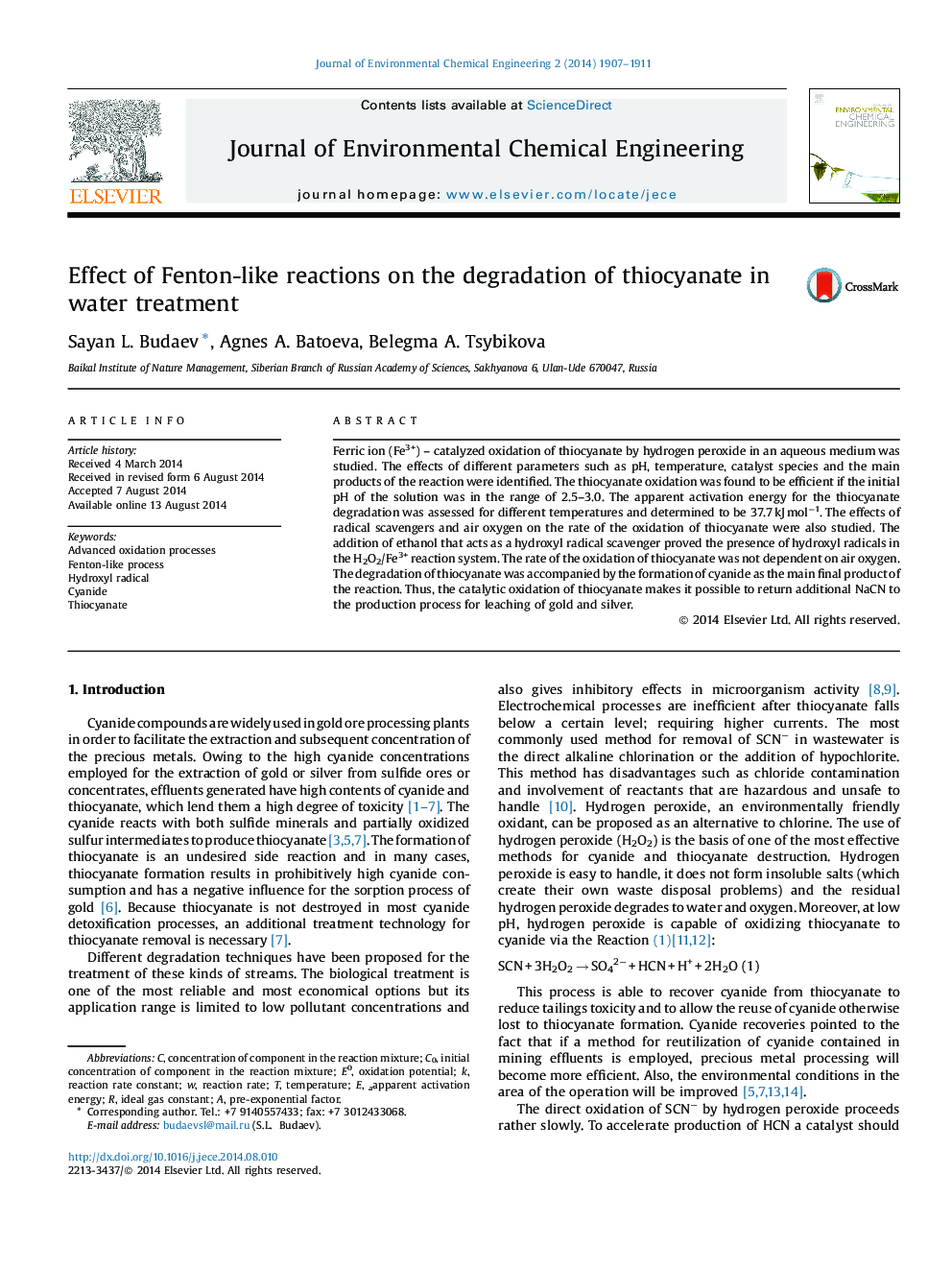| Article ID | Journal | Published Year | Pages | File Type |
|---|---|---|---|---|
| 221798 | Journal of Environmental Chemical Engineering | 2014 | 5 Pages |
Ferric ion (Fe3+) – catalyzed oxidation of thiocyanate by hydrogen peroxide in an aqueous medium was studied. The effects of different parameters such as pH, temperature, catalyst species and the main products of the reaction were identified. The thiocyanate oxidation was found to be efficient if the initial pH of the solution was in the range of 2.5–3.0. The apparent activation energy for the thiocyanate degradation was assessed for different temperatures and determined to be 37.7 kJ mol−1. The effects of radical scavengers and air oxygen on the rate of the oxidation of thiocyanate were also studied. The addition of ethanol that acts as a hydroxyl radical scavenger proved the presence of hydroxyl radicals in the H2O2/Fe3+ reaction system. The rate of the oxidation of thiocyanate was not dependent on air oxygen. The degradation of thiocyanate was accompanied by the formation of cyanide as the main final product of the reaction. Thus, the catalytic oxidation of thiocyanate makes it possible to return additional NaCN to the production process for leaching of gold and silver.
